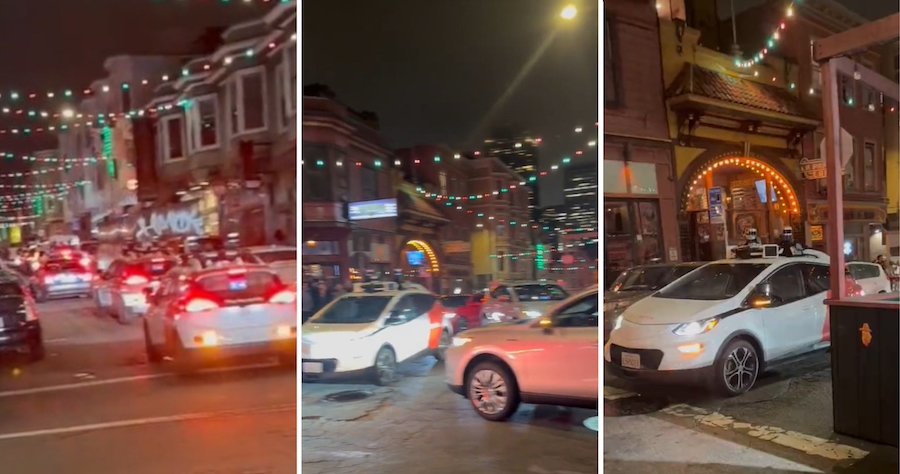Cruise Robotaxis Caused Mayhem in San Francisco, the Company Wants Its Own Cell Network

Cruise recently got a permit to operate 24/7 in all areas of San Francisco, despite city officials and public opposition. Critics pointed out countless incidents when Cruise autonomous vehicles interfered with emergency vehicles, blocked the city streets, or caused accidents. Ironically, the night after Cruise popped the champagne to celebrate the permit, its vehicles again caused mayhem in San Francisco. Up to ten Cruise robotaxis stopped on a small street in the North Beach area, blocking the traffic.
The robotaxis stopped with the hazard lights blinking on Grant Avenue, one of the oldest streets in the Chinatown districts. It's a one-way street, so the stopped cars completely blocked it, forcing other drivers to back up. The blockage also affected Columbus Avenue and Vallejo Street. To make the matter worse, the cell connectivity that should've allowed human operators to control the vehicles was patchy, leading to a prolonged disruption.
San Francisco police confirmed that the cell connectivity issues were caused by the large crowd attending the nearby Outside Lands music festival. The cell network was overwhelmed by the number of phones connected to the nearby cells, causing it to crash. Cruise apologized and promised to investigate the incident. It also said it is working on a solution to prevent a similar incident from happening again. Not only did the issue prevent operators from removing the robotaxis from the area, but it also hindered Cruise's efforts to reroute other cars to avoid it.
According to San Francisco Supervisor Aaron Peskin, who spoke with San Francisco Chronicle, Cruise is considering creating its own cell phone network in San Francisco. That would be a first in the robotaxi world. Autonomous vehicles depend on network connectivity to communicate with "the mothership," receiving routing indications and sending data about traffic conditions. They are lost when the network is down, as a large chunk of the data processing is done server-side.
California Public Utilities Commission voted on Thursday to allow Cruise and Waymo to expand their robotaxi services throughout San Francisco. The permit was granted despite city officials arguing that the technology is immature. They pointed to an increase in the number of incidents involving robotaxis in San Francisco. These include driverless cars blocking traffic, disrupting emergency operations and bus routes, and clashing with bicycles and pedestrians. The SF Fire Department logged 66 incidents since May 2022.
The new incident on Friday night made people question the decision of state regulators a day earlier to approve the expanded use of robotaxis in the city. San Francisco Supervisor Aaron Peskin confirmed on Sunday that government agencies would ask the city attorney to file a petition requesting that the state revisit last week's decision.
Well, here are about ten @cruise driverless vehicles stopping traffic dead on Grant Avenue and spilling over to Columbus Avenue and Vallejo Street. I don’t remember voting for this. Do you? @SFFDPIOpic.twitter.com/C9ow7lWD0m
— 🅸🆃’🆂 🅵🆁🅸🆂🅲🅾︎ (@Gregster56) August 12, 2023
Nouvelles connexes


